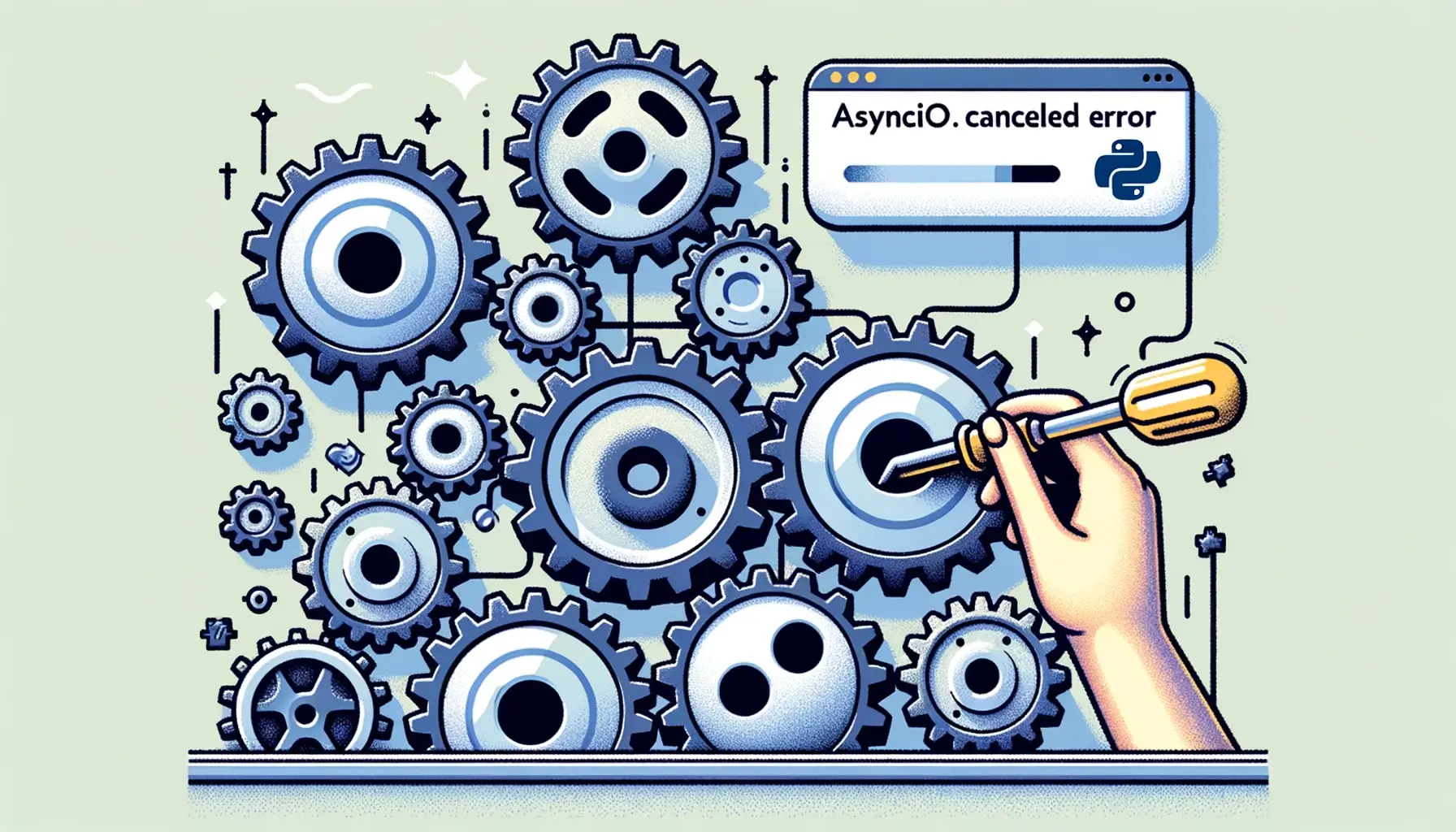The realm of asynchronous programming in Python has witnessed immense growth and traction, especially with the advent and improvement of the asyncio library.
However, as with any tool, there can be pitfalls. A common conundrum developers face is the baffling scenario where asyncio.CancelledError goes uncaught.
If you’ve found yourself grappling with this issue, you’re not alone. Let’s embark on a journey to comprehend and conquer this challenge.

The Basics: What is asyncio.CancelledError?
Before diving into the crux of the matter, it’s pivotal to grasp the essence of asyncio.CancelledError.
asyncio.CancelledError is an exception raised when an asynchronous task or future is canceled. The design intent is to ensure a graceful shutdown of tasks that might be running when an event loop is stopped or when a task is explicitly canceled.
Common Scenarios: When Does This Error Strike?
Understanding the contexts where this error might arise can be instrumental in both preemptively avoiding and resolving it.
1. Premature Loop Closure:
If you accidentally close the event loop before a task has had a chance to complete, the task might be canceled, triggering this error.
2. Explicit Task Cancellation:
Manually canceling a task using methods like Task.cancel() will often lead to asyncio.CancelledError, especially if the task hasn’t been designed to handle cancellations gracefully.
3. Nested Asynchronous Functions:
Sometimes, when using nested async functions, if the outer function is canceled, the inner ones might throw this error if not handled properly.
Strategies to Handle asyncio.CancelledError
The primary objective should be to allow for graceful task closures and error handling. Here are ways to achieve that:
1. Proper Loop Management:
Ensure that you are not closing the event loop prematurely. Always allow tasks to complete or handle them appropriately before stopping the loop.
2. Graceful Task Shutdown:
When working with tasks that might be canceled, always incorporate cleanup code or exception handling. This can be done using Python’s try...except blocks. For example:
async def potentially_cancelled_task():
try:
# Your main task code here
...
except asyncio.CancelledError:
# Handle cleanup or other necessary actions here
...
raise3. Utilize Context Managers:
Python’s with statement alongside asyncio provides a neat way to manage resources and can be a way to ensure tasks are handled appropriately.
4. Reassess Task Cancellation:
If a task is being manually canceled, always consider if it’s necessary. If it is, ensure that you’ve put mechanisms in place to handle potential errors.
A Beacon for Asynchronous Endeavors
Asynchronous programming with asyncio is an immensely powerful tool in Python’s arsenal. However, like all powerful tools, it demands respect and understanding.
With the insights on asyncio.CancelledError, you’re now equipped to tackle one of the more elusive challenges in this domain.
As always, remember that the path to mastery is paved with challenges, each one an opportunity to grow. Embrace them, learn from them, and keep coding asynchronously!
Martijn Pieters is a seasoned Principal Software Engineer and Software Architect with a rich background in crafting innovative software solutions. Beyond technical expertise, Martijn passionately mentors upcoming talents, sharing insights from his extensive experience to shape the next generation of tech leaders.